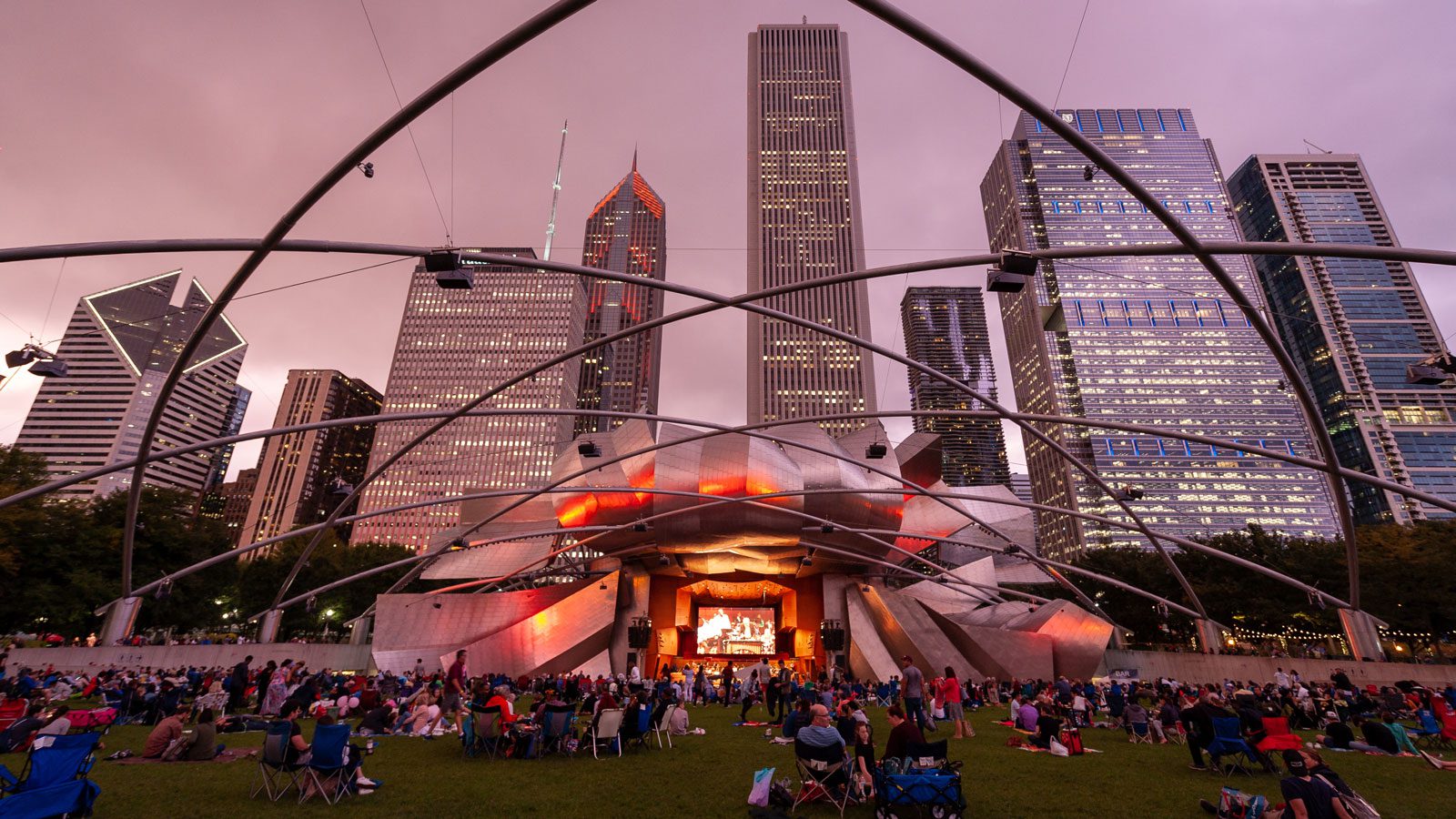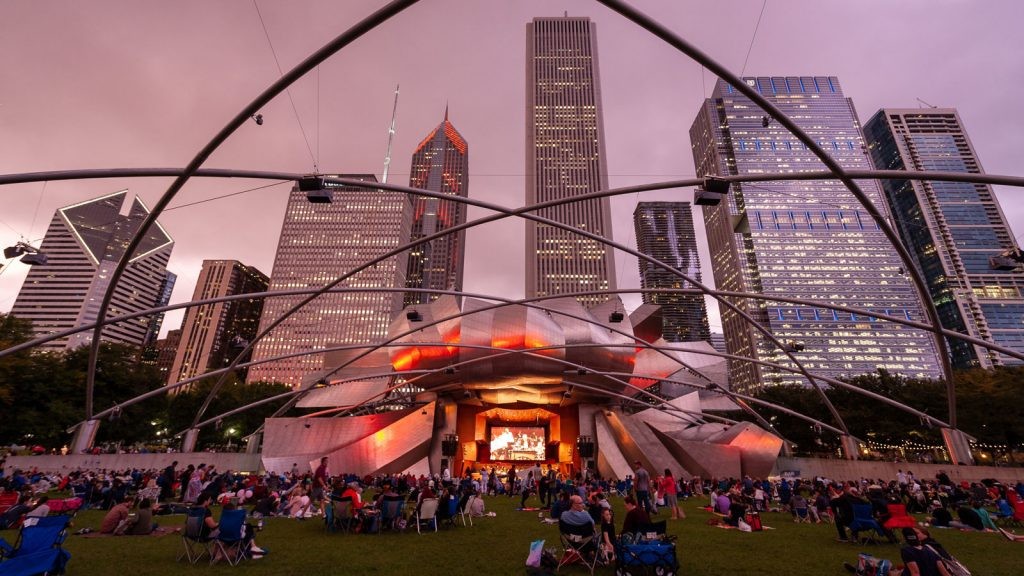Ease into Immersive Audio
By Kirsten Nelson


Immersive sound. It’s been around forever and yet it’s entirely new. Particularly as it’s being productized and rebranded in new pairs of headphones, music releases and loudspeakers that promise to deliver a more complete experience of audio.
But it’s not just clever rebranding (although it’s a little bit of that). It’s actually different this time. And the factors that make it different just might be the magic impetus the world has been waiting for since the first time Pink Floyd flew an inflatable pig across a stadium and swirled squeals around a quadrophonic sound system.
Yes, that is an ancient reference, but it’s one that many in the audio world can recollect with perfect alacrity. It’s one of the legendary sound design stories that have been passed down through the ages, along with a whole bunch of others that all seem to be about “being surrounded by sound.” We love that idea. The Wall of Sound. Broadway shows with imaginary helicopter landings. Cirque du Soleil performances with all sorts of mystifying audio effects.
These are the origin stories, but the idea is still so genuinely engrossing that today’s Pink Floyd tribute bands still promise the “same surround sound” as the original performances.
Why? Because we’re human and we love to be transported beyond our normal cognitive function… while also somehow feeling like technology is delivering the purest, most natural experience of sound. After all, we’re immersed in audio all day, right? But it’s harnessing that sensation and delivering something beyond the norm that makes it truly evocative.
That’s where things get a little blurry. What’s evocative is obviously pretty subjective. But here’s the exciting thing. We’re living in a time when there is better access to the tools that make immersive audio compelling. Which means that more artists and experience designers can create something uniquely resonant for their audiences.
Because after all, isn’t that what the beautiful sensation of immersion is all about? All boundaries and barriers are erased and you’re there, listening to what moves you the most. Whether that’s Steely Dan or Dua Lipa.
So how can we translate what excited us about immersive sound in the past into new, more readily available experiences now? With so much spatialized audio happening in our Apple
Airpod Max headphones and all that great Dolby Atmos sound happening in movie theaters, we’ll be looking for more, right?
Loudspeaker manufacturers think so, with more specialized kits ready to be deployed for a complete sonic makeover either on tour or in installations. The touring possibilities are still TBD, with the extra load-in time for all those channels causing a bit of hesitance. But the effect is so stunning, it might make sense for more extended dates or in permanent spaces that artists can use to their creativity’s content.
One such venue exists in Chicago’s Millennium Park. The Jay Pritzker Pavilion opened in 2004 with literally, actually the world’s first “aerial sound system” distributed across a massive trellis that delivers a captivating sonic picture across 4,000 seats and an extra 95,000 square feet of Great Lawn, which can hold 10,000 people.
Since its earliest days, it became a testing ground for immersive audio. And it evolved into a fully realized example of “both” kinds of immersive audio that are sparking renewed interest: Using a sound system to envelop the audience in a sonic experience. And also that other version of immersive audio, which is all about wildly creative interpretations of roving audibility, including sound art.
When Millennium Park first opened, the sound system and acoustic enhancement system were based on the era’s existing DSP and digital audio networking technologies. It meant the audio system was connected digitally, but routing sound was still fairly arduous. A lot of patching had to happen. And special hardware was required if you wanted to finesse some individual speaker addressability.
Since moving to a Dante networked audio system in one of the most recent technology upgrades, now it’s possible to fine-tune an immersive audio experience. Each of the many, many loudspeakers dotting the park’s expansive trellis can now be individually addressed.
This sounds fairly simple to those who are most familiar with using their phones to connect to individual Sonos speakers on a daily basis, but seriously, this was pretty difficult (or at least tedious) to achieve until recently. Which raises some important questions we need to contemplate as immersive audio becomes more and more accessible and fashionable.
First, consider the overall creative impetus for adding more channels of audio. “As designers and creatives you have to think about, what is the goal of a project? What is the goal of any particular event? And then consider which of these tools can help achieve that artistic vision,” said Jonathan Laney, founder of JPL Design and Production.
Laney has been a part of the sound of Millennium Park since its initial design phase, all the way through the day-to-day operations and updates that continue to improve on delivery of what might be said are its two main goals:
From an audience perspective – The immersive listening experience at Pritzker Pavilion is finely calibrated to match the type of music on stage. Most subtle perhaps is the mix for the Grant Park Symphony Orchestra. An acoustic enhancement system provides that sense of space that’s missing from an area that is out in the open. And the sound reinforcement system helps overcome the ambient noise of the urban environment, providing the clarity and loudness to cover an audience area six times that of a typical concert hall. Object-based mixing further sharpens the audio imagery, selectively boosting each section of players so the instruments are heard as if the sound is coming from their location on stage.
The latest iteration of DSP options at the park enable the freedom and flexibility of object-based mixing. Each section’s microphone is treated as an individual input that can be matrixed out far beyond the LCR-plus-sub outputs of yore. “Now you might have 32, 48 or 64 channels that have to get from your console to your matrix,” Laney described. “And that’s where a networked audio solution makes that a lot more simple to implement than having 32, 48, 64 or more cables having to be patched in the right place. As well as the ability to remap routings within that audio network.”
From an artist perspective – For events like the Sonic Pavilion Festival, immersive audio goals will vary immensely for each work. “Artists will determine what that is, especially in an outdoor environment,” Laney explained. “Some of the artists wanted their piece to blend into the environment, so that it was not a noticeable entity. The sounds would come and go, but they would fall into the urban din.”
Maybe that’s why immersive audio is everywhere now. It can be tailored to fit any atmosphere or any creative purpose. No matter which version you’re seeking, and however transparent or overt you want it to be, it’s all more possible now.
Stay up to date with the Dante Journal
* indicates required fields




